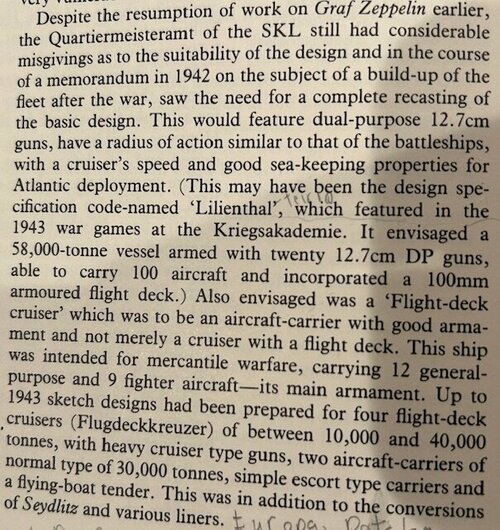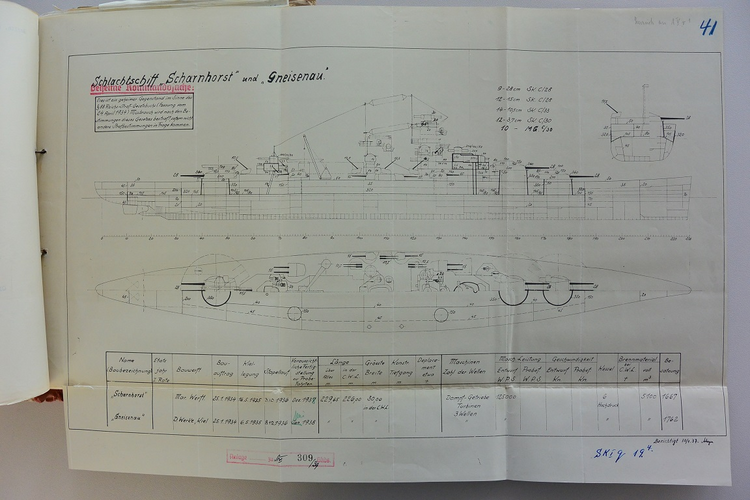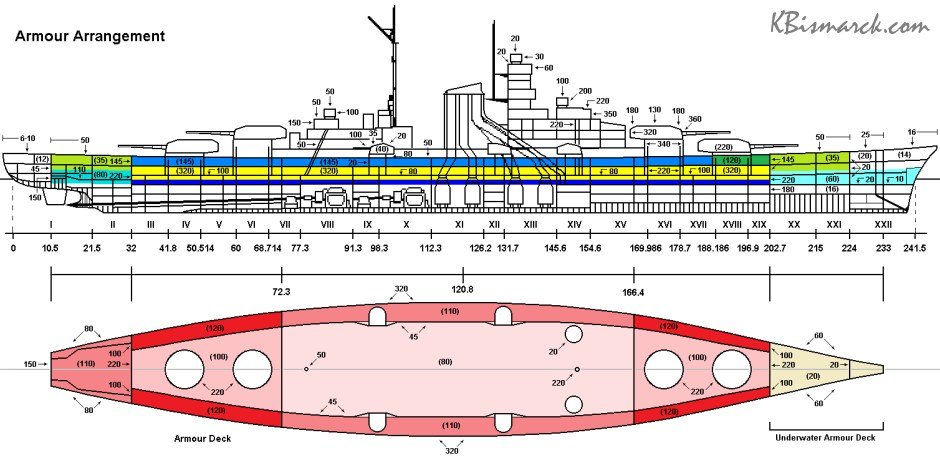You are using an out of date browser. It may not display this or other websites correctly.
You should upgrade or use an alternative browser.
You should upgrade or use an alternative browser.
Kriegsmarine - KM Ship Plans/Discussion
- Thread starter _Sarcasticat_
- Start date
lukasgrul
ACCESS: Confidential
- Joined
- 15 May 2021
- Messages
- 129
- Reaction score
- 111
Thank you very muchTry adding details, like some ropes, cables, antennas, capstans, winches, bitts and fairleads, anchors, boats etc
goofygoober20000
ACCESS: Restricted
- Joined
- 12 October 2024
- Messages
- 8
- Reaction score
- 8
goofygoober20000
ACCESS: Restricted
- Joined
- 12 October 2024
- Messages
- 8
- Reaction score
- 8
Seems to be, but my question is how were they supposed to place those twenty 127mm? They definitely would put 5 or 6 next to the bridge but what about the rest?
goofygoober20000
ACCESS: Restricted
- Joined
- 12 October 2024
- Messages
- 8
- Reaction score
- 8
I think it could have been a SK C/34 (the only 127mm in kriegsmarine) or a completely different design
MrMemerMan
ACCESS: Restricted
- Joined
- 11 June 2020
- Messages
- 46
- Reaction score
- 40
Is there anymore information about this?Very interesting...View attachment 758364
Force Lord
ACCESS: Restricted
- Joined
- 13 December 2020
- Messages
- 17
- Reaction score
- 11
Unfortunately no. At least, not published. If there's anything in the Kriegsmarine archives it's probably not yet digitized in Invenio.Is there anymore information about this?
MrMemerMan
ACCESS: Restricted
- Joined
- 11 June 2020
- Messages
- 46
- Reaction score
- 40
I'm gonna take a wild guess and say armor wise, it probably was similar to the A-III C variant, or anything of the A series.Unfortunately no. At least, not published. If there's anything in the Kriegsmarine archives it's probably not yet digitized in Invenio.
Force Lord
ACCESS: Restricted
- Joined
- 13 December 2020
- Messages
- 17
- Reaction score
- 11
Whitley actually mentions that the German aircraft cruisers had variants that were pure carriers, however he gives no outlines of these versions.I'm gonna take a wild guess and say armor wise, it probably was similar to the A-III C variant, or anything of the A series.
MrMemerMan
ACCESS: Restricted
- Joined
- 11 June 2020
- Messages
- 46
- Reaction score
- 40
Only time will tell.Whitley actually mentions that the German aircraft cruisers had variants that were pure carriers, however he gives no outlines of these versions.
YourChair
ACCESS: Confidential
- Joined
- 24 October 2021
- Messages
- 78
- Reaction score
- 117
The passage outright calls them "DP guns", so assumedly the author is not referring to the standard C/34 guns in SP mountings.I think it could have been a SK C/34 (the only 127mm in kriegsmarine) or a completely different design
Of course, this doesn't narrow it down at all: this could be the LM/41 twin mounting for the DDs (although that one is only 52 degrees max elevation -- perhaps a different version would reach 70 degrees, as I recall the single mount did?)
It could also be the KM 40 (128/61), or the "12.7cm Doppelflak" whose documents are is in the weaponry folder.
(The fact they are called "127mm" in the passage is probably just a designation quirk, the same as British 113mm guns being called "114mm", and German 149mm guns being called "150mm".)
- Joined
- 9 October 2009
- Messages
- 21,430
- Reaction score
- 12,692
So they were looking at what was effectively (in some respects at least) a Battlecarrier design though the alternate interpretation of it being a German equivalent to the Midway-class has merit as well, along with a 'Flight-deck cruiser' design, both for use in a post-war period following what was still then seen as a inevitable Axis victory.Very interesting...
YourChair
ACCESS: Confidential
- Joined
- 24 October 2021
- Messages
- 78
- Reaction score
- 117
Magiaconatus
ACCESS: Restricted
- Joined
- 23 October 2022
- Messages
- 8
- Reaction score
- 5
I don't think there is for H39. Either lost or buried somewhere in some container at BAMA.Seeing as so much incorrect information was spread about the armor scheme of the Scharnhorsts, do we have any (verified) plans or drawings of the armor of the Bismarck class and the H class?
It seems odd that the Bismarck armor scheme would look so different from the Scharnhorst scheme.
View attachment 760526
View attachment 760527
There is a similar one to your Scharnhorst on Tirpitz, but that's probably "as planned", and not an "as fitted" plan.
Bismarck horizontal armour deck over the forward magazine wasn't 100 mm but 95 mm, or the main mast upper lookout wasn't 60 mm, but 55 mm by the time they finished construction. And who knows what else more was different.
Similar threads
-
Kriegsmarine - KM Naval Armament Plans/Discussion
- Started by _Sarcasticat_
- Replies: 288
-
I-400 sized German U-boat projects from WW2?
- Started by Vahe Demirjian
- Replies: 8
-
-
-




